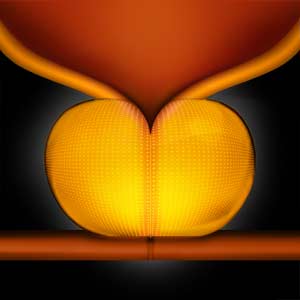UroLift Procedure for BPH
What is UroLift?
UroLift is a minimally invasive procedure that relieves symptoms of BPH. BPH, or an enlarged prostate, can cause urinary symptoms like:
- Frequent urges to urinate, including at night
- A weak or slow urine stream
- A feeling that your bladder isn’t empty
- Starting/stopping during urination
The majority of men over 50 years old have BPH. It can have signifcant impact on your sleep, your schedule, and your overall quality of life.
How does UroLift work?
The UroLift procedure uses small implants that hold back prostate tissue so it doesn’t block the urethra. This allows the free-flow of urine. It’s the only BPH procedure that doesn’t involve heating, cutting, or removing prostate tissue. UroLift is typically performed in an office procedure suite using a local anesthetic. It’s an out-patient procedure and most patients leave without a catheter.
See UroLift Patient Education Flyer here.
 BPH causes the prostate to constrict the urethra and make it difficult to urinate.
BPH causes the prostate to constrict the urethra and make it difficult to urinate.
 Small UroLift implants are used to gently pull back the prostate from the urethra. This increases the flow of urine.
Small UroLift implants are used to gently pull back the prostate from the urethra. This increases the flow of urine.
UroLift Procedure FAQ
Am I a good candidate for the UroLift procedure?
Good UroLift candidates are usually male, age 45 or older, and have symptoms caused by BPH or an enlarged prostate. Our urologists can help you determine if UroLift is the right treatment for you. Patients with allergies to nickel, stainless steel, or titanium should discuss these allergies with their doctor prior to UroLift.
How long does the UroLift procedure take?
The UroLift procedure usually takes less than an hour to complete.
How much does UroLift cost?
UroLift is covered by Medicare and most private insurance companies. You can check with your insurance company about your specific benefits.
What are UroLift’s side effects?
The most common UroLift side effects are mild to moderate pain, burning with urination, pelvic pain, blood in urine, and an urgent need to urinate or the inability to control urges to urinate. Most symptoms, if experienced at all, resolve between two and four weeks after the procedure.
Does UroLift affect sexual function?
In clinical studies, the UroLift procedure did not cause new instances of ejaculatory or erectile dysfunction. This is not the case with all BPH therapies, including TURP, laser, and some BPH medications.
UroLift Next Steps
If you think UroLift may be right for you, schedule an appointment with one of our urologists today.



